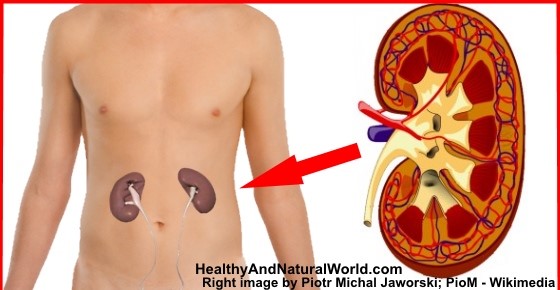
Alcohol: The Liver Damager.
Alcoholic liver disease(ALD) is a term that encompasses the liver manifestations of alcohol overconsumption, including fatty liver, alcoholic hepatitis, and chronic hepatitis with liver fibrosis or cirrhosis.
It is the major cause of liver disease in Western countries. Although steatosis (fatty liver) will develop in any individual who consumes a large quantity of alcoholic beverages over a long period of time, this process is transient and reversible. Of all chronic heavy drinkers, only 15–20% develop hepatitis or cirrhosis, which can occur concomitantly or in succession.
The mechanism behind this is not completely understood. 80% of alcohol passes through the liver to be detoxified. Chronic consumption of alcohol results in the secretion of some factors like pro-inflammatory cytokines, oxidative stress and acetaldehyde . These factors cause inflammation, apoptosis and eventually fibrosis of liver cells.
Additionally, the liver has tremendous capacity to regenerate and even when 75% of hepatocytes are dead, it continues to function as normal.
Risk factors. The risk factors presently known are:
Quantity of alcohol taken: Consumption of 60–80g per day (about 75–100 mL/day) for 20 years or more in men, or 20g/day (about 25 mL/day) for women significantly increases the risk of hepatitis and fibrosis by 7 to 47%,
Pattern of drinking: Drinking outside of meal times increases up to 3 times the risk of alcoholic liver disease.
Gender: Women are twice as susceptible to alcohol-related liver disease, and may develop alcoholic liver disease with shorter durations and doses of chronic consumption. The lesser amount of alcohol dehydrogenase secreted in the gut, higher proportion of body fat in women, and changes in fat absorption due to the menstrual cycle may explain this phenomenon.
Hepatitis C infection: A concomitant hepatitis C infection significantly accelerates the process of liver injury.
Genetic factors: Genetic factors predispose both to alcoholism and to alcoholic liver disease. Both monozygotic twins are more likely to be alcoholics and to develop liver cirrhosis than both dizygotic twins. .
Diet: Malnutrition, particularly vitamin A and E deficiencies, can worsen alcohol-induced liver damage by preventing regeneration of hepatocytes. This is particularly a concern as alcoholics are usually malnourished because of a poor diet and anorexia.
Pathophysiology
Fatty change
Fatty change, or steatosis is the accumulation of fatty acids in liver cells. These can be seen as fatty globules under the microscope. Alcoholism causes development of large fatty globules (macrovesicular steatosis) throughout the liver and can begin to occur after a few days of heavy drinking.
Alcoholic hepatitis
Alcoholic hepatitis is characterized by the inflammation of hepatocytes. Between 10% and 35% of heavy drinkers develop alcoholic hepatitis. While development of hepatitis is not directly related to the dose of alcohol, some people seem more prone to this reaction than others.
Cirrhosis. Cirrhosis is a late stage of serious liver disease. It is marked by inflammation, fibrosis (cellular hardening) and damaged membranes preventing detoxification of chemicals in the body, ending in scarring and necrosis (cell death). Between 10% to 20% of heavy drinkers will develop cirrhosis of the liver. Symptoms include jaundice (yellowing), liver enlargement, and pain and tenderness from the structural changes in damaged liver architecture. Without total abstinence from alcohol use, cirrhosis will eventually lead to liver failure. Late complications of cirrhosis or liver failure include portal hypertension (high blood pressure in the portal vein due to the increased flow resistance through the damaged liver), coagulation disorders (due to impaired production of coagulation factors), ascites (heavy abdominal swelling due to buildup of fluids in the tissues) and other complications, including hepatic encephalopathy and the hepatorenal syndrome. Cirrhosis can also result from other causes than alcohol abuse, such as viral hepatitis and heavy exposure to toxins other than alcohol. The late stages of cirrhosis may look similar medically, regardless of cause. Fatty change and alcoholic hepatitis with abstinence can be reversible. The later stages of fibrosis and cirrhosis tend to be irreversible, but can usually be contained with abstinence for long periods of time.
Diagnosis.
In the early stages, patients with ALD exhibits subtle and often no abnormal physical findings. It is usually not until development of advanced liver disease that stigmata of chronic liver disease become apparent. Early ALD is usually discovered during routine health examinations when liver enzyme levels are found to be elevated. Continuation of alcohol use will result in a higher risk of progression of liver disease and cirrhosis. In patients with acute alcoholic hepatitis, clinical manifestations include fever, jaundice, hepatomegaly, and possible hepatic decompensation with hepatic encephalopathy, variceal bleeding, and ascites accumulation. Tender hepatomegaly may be present, but abdominal pain is unusual. Occasionally, the patient may be asymptomatic.
In people with alcoholic hepatitis, liver function test is derange. The serum aspartateaminotransferase (AST) to alanineaminotransferase (ALT) ratio is greater than 2:1.AST and ALT levels are almost always less than 500.
Treatment.
Not drinking further alcohol is the most important part of treatment. People with chronic HCV infection should abstain from any alcohol intake, due to the risk for rapid acceleration of liver disease.
Prognosis.
The prognosis for people with ALD depends on the liver histology as well as cofactors, such as concomitant chronic viral hepatitis. Among patients with alcoholic hepatitis, progression to liver cirrhosis occurs at 10–20% per year, and 70% will eventually develop cirrhosis. Despite cessation of alcohol use, only 10% will have normalization of histology and serum liver enzyme levels. Liver cirrhosis develops in 6–14% of those who consume more than 60–80 g of alcohol daily for men and more than 20 g daily for women. Even in those who drink more than 120 g daily, only 13.5% will suffer serious alcohol-related liver injury. Worldwide mortality is estimated to be 150,000 per year.



Leave a Comment